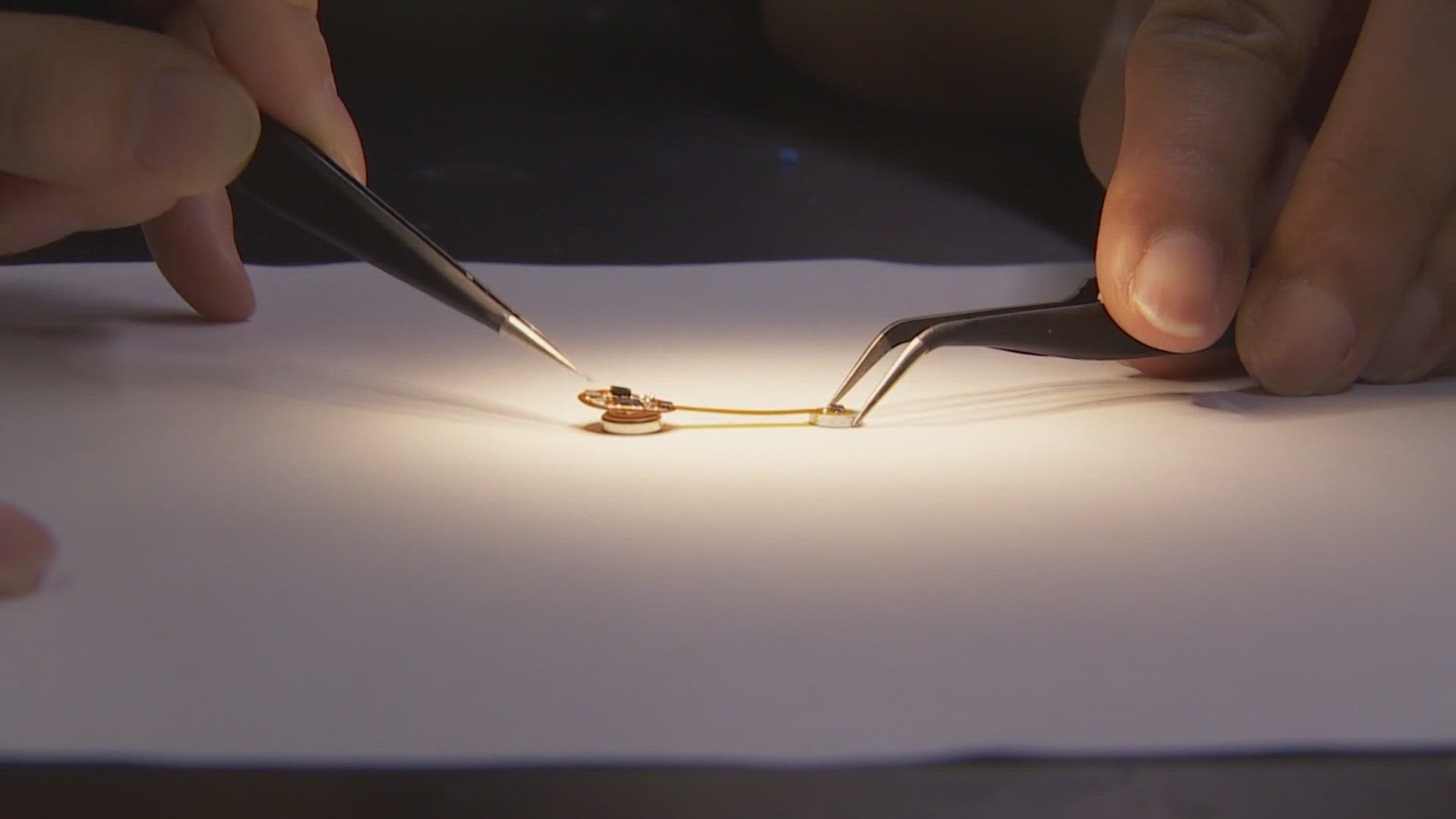SEATTLE — Fashion accessories are increasingly entering the realm of health monitoring. Smartwatches have been on the market for years now. But what about a smart earring?
Engineering researchers at the University of Washington are using Bluetooth and other computer technology to measure the subtle but important changes in our body through earrings.
Qiuyue (Shirley) Xue likes earrings and wears them almost every day. She also likes the usefulness of her smartwatch.
"I use it to monitor my health status, my heart rate, my activities," Xue said.
So the UW Paul G. Allen School of Computer Science & Engineering doctoral student wondered, what if an earring can do the same thing a smartwatch does, only better?
In 2022, Xue got to work on developing it. Her and co-lead author Yujia (Nancy) Liu's findings were published in January.
"It's a smart, wireless earring I designed for continuous temperature monitoring," Xue said.
She calls it the "thermal earring." It's about the size of a paper clip and has a 28-day battery life.
The gemstone part measures the wearer's earlobe temperature and has a magnet that attaches to the dangly part, which measures the ambient temperature just inches away from the head.
"Because it's so close to your head, the head is part of your core body. So it's actually very accurate and tightly coupled to your core body temperature," Xue said.
Xue said the technology is sensitive enough to measure subtle temperature changes from fever, ovulation, and even emotional detection — for example, when a face is flushed with anger or embarrassment.
"Temperature is actually a very important vital sign," Xue said.
The earrings are connected to an app that records the temperature data in real-time.
While an oral thermometer can capture a person's temperature at that moment, these earrings record body heat for extended periods of time, which can be useful in monitoring any fluctuations, even the effectiveness of certain medications.
It's not commercially available yet but Xue believes her design will catch on, especially now, in our COVID world where measuring body temperature can be critical.
"We hope it can serve as a potential platform for clinical studies for fevers," Xue said.
Xue's research, along with co-authors Yujia (Nancy) Liu, Joseph Breda, Vikram Iyer, and Shwetak Patel, were published in the Proceedings of the ACM on Interactive, Mobile, Wearable and Ubiquitous Technologies in January.

